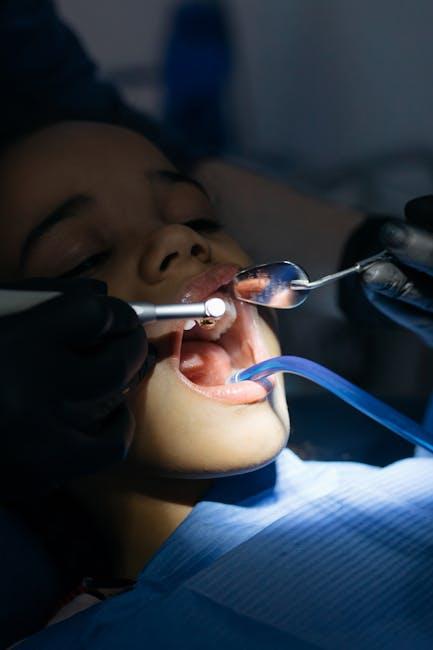Tooth Decay Remains ‘Leading Reason’ Children Are Admitted to Hospital – Insights from Nature
Tooth decay, medically referred to as dental caries, continues to be the leading cause of hospital admissions among children worldwide, according to recent studies published by Nature. Despite advances in dental care and increased awareness about oral hygiene, thousands of children still require hospital treatment for severe tooth decay each year. This article explores the latest data, reasons for the prevalence of childhood tooth decay, and effective ways to prevent it for healthier, happier young smiles.
Understanding Tooth Decay in Children
Tooth decay is the gradual destruction of tooth enamel caused by acids produced by bacteria feeding on sugars left in the mouth. For children, this can lead to pain, discomfort, infection, and in severe cases, tooth loss. When untreated, decay may result in complications that necessitate hospital admission, such as abscess formation or the need for general anesthesia for dental procedures.
Why Are Children Particularly Vulnerable?
- Dietary Habits: High consumption of sugary snacks and beverages significantly increases decay risk.
- Inconsistent Oral Hygiene: Many children aren’t yet disciplined in brushing and flossing effectively.
- Access to Dental Care: Socioeconomic disparities often prevent routine dental check-ups.
- Early Childhood Caries (ECC): This aggressive form of decay targets toddlers and preschoolers, causing rapid tooth damage.
Key Statistics from the Nature Study
The Nature article highlights eye-opening statistics about childhood tooth decay and hospital admissions:
| Statistic | Data |
|---|---|
| Percentage of children admitted for tooth decay | Over 40% |
| Average number of teeth affected by decay | 3-5 teeth per child |
| Age group with highest hospital admissions | 5-9 years old |
| Region with highest rates | Low-income communities in urban areas |
Consequences of Untreated Tooth Decay in Children
Leaving tooth decay untreated can have severe consequences that extend far beyond dental health:
- Chronic Pain and Discomfort: Causes eating and sleeping difficulties, affecting growth and development.
- Speech Development Issues: Missing or painful teeth can impact clear speech formation.
- Social and Emotional Effects: Children often feel self-conscious about their smile, leading to decreased confidence.
- Increased Healthcare Costs: Hospital admissions and surgeries drastically increase financial burdens.
Preventing Tooth Decay: Practical Tips for Parents
Preventive care is the best defense against severe tooth decay. Parents and caregivers can implement several strategies at home:
- Daily Oral Hygiene: Brush children’s teeth twice daily with a fluoride toothpaste and supervise flossing.
- Balanced Diet: Reduce sugary snacks and drinks; encourage fruits, vegetables, and water intake.
- Regular Dental Visits: Schedule check-ups every 6 months to catch decay early.
- Sealants and Fluoride Treatments: Ask your dentist about protective treatments that strengthen enamel.
- Educate Your Child: Teach kids the importance of oral health with age-appropriate explanations.
Helpful Oral Hygiene Routine Example
| Time | Activity |
|---|---|
| Morning | Brush with fluoride toothpaste after breakfast |
| Midday | Rinse mouth or chew sugar-free gum after lunch (if brushing not possible) |
| Evening | Brush teeth thoroughly before bed |
Case Study: Transforming Dental Health in a Community
In a recent public health initiative, a low-income urban community with high rates of childhood tooth decay underwent a targeted educational and treatment program. Within two years:
- Hospital admissions due to tooth decay dropped by 30%
- Access to fluoride varnish treatments increased by 50%
- Parents reported improved confidence in their child’s oral hygiene
This project reaffirmed that community involvement and preventive care directly reduce severe dental health issues in children.
First-Hand Experience: A Parent’s Perspective
Jessica, mother of a 7-year-old, shares her journey:
“My son had multiple cavities and ended up needing surgery under general anesthesia. It was scary and painful for him. Since then, we’ve made daily brushing and water over soda a priority. Regular dental visits have made a huge difference—we haven’t had hospital visits for dental issues since!”
Why This Matters: The Bigger Picture of Pediatric Dental Care
Tooth decay in children affects not only individual health but also public health systems globally. Preventing childhood dental problems will decrease hospital admissions, reduce healthcare costs, and improve quality of life for millions of children.
It is essential for parents, educators, healthcare providers, and policymakers to prioritize childhood dental health programs, especially in vulnerable communities, to combat this persistent issue.
Conclusion: Protecting Our Children’s Smiles
Tooth decay remains the leading reason children are admitted to hospitals—a preventable and manageable condition with the right knowledge and proactive care. By understanding the risks, implementing practical oral health routines, and ensuring regular professional dental check-ups, we can dramatically reduce the burden of childhood tooth decay.
Investing in childhood dental health is investing in their future — bright, healthy smiles are foundational to children’s overall well-being. Let’s work together to make tooth decay a thing of the past.


